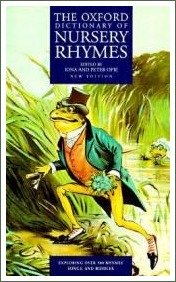You are here: home / nursery rhymes and songs / Humpty Dumpty
Humpty Dumpty Nursery Rhyme
The Humpty Dumpty nursery rhyme is a children's rhyme which has a long history of being sung to a simple tune.
No-one is sure how old Humpty Dumpty is but it is generally thought to have been around for many hundreds, perhaps even thousands, of years.
The problem is that nursery rhymes were passed down orally from parents to their children for many, many years before anyone thought to write them down and this makes it very hard to work out exactly how old they are, where they originated or the original wording that was used. And, of course, it's often hard to work out what they really mean or whether they're just nonsense rhymes.
Over the years, new variations of the most famous nursery rhymes appeared, making it even harder to trace the rhymes back to their origins or work out what they mean. This is certainly the case with Humpty Dumpty. People have been trying to work out what the rhyme means for hundreds of years and there's still no real consensus among scholars about it.
Scroll down to read more about the origins and about the meanings which have been attributed to the Humpty Dumpty nursery rhyme over the years.
Humpty Dumpty
Here are the words to Humpty Dumpty:
Humpty Dumpty sat on a wall,
Humpty Dumpty had a great fall.
All the King's horses, And all the King's men
Couldn't put Humpty together again.
If you aren't familiar with the tune, you may find this youTube clip helpful.
Humpty Dumpty: History and Meaning
Iona and Peter Opie, in their wonderful book The Oxford Dictionary of Nursery Rhymes, note that nursery rhymes were often riddles and that it's possible that Humpty Dumpty was also originally a riddle. The rhyme does not explicitly state that Humpty Dumpty is an egg and perhaps this was the point of the original riddle: to guess what Humpty Dumpty was.
According to the Opies, students of linguistics believe the rhyme is so old that its age 'is to be measured in thousands of years, or rather it is so great that it cannot be measured at all' (p.252). It does not appear in early riddle books but it is thought that this might be because it was already too well-known for authors to bother with. We do know that the term Humpty Dumpty was given to a boiled ale-and-brandy drink from the end of the seventeenth century. Was the rhyme already so old and so well-known by then that the drink was named for the rhyme?
The earliest reference to Humpty Dumpty as a comical character appears in the caption to an engraving in a book published sometime between 1754 and 1764. Part of the caption reads: 'Sir Humpty Dumpty fierce as Turk, At Captain Doodle runs his fork.' Does this make it more likely that Humpty Dumpty was originally a real person?
The earliest known version of the Humpty Dumpty nursery rhyme was published in Samuel Arnold's Juvenile Amusements in 1797 with the words:
Humpty Dumpty sat on a wall,
Humpty Dumpty had a great fall.
Four-score Men and Four-score more,
Could not make Humpty Dumpty where he was before.
There are three interesting theories about who or what Humpty Dumpty was:
the name Humpty Dumpty may have originally referred to a person since it echoes the pet forms of the name Humphrey, which were Dump and Dumphry;
the original Humpty Dumpty may have been Richard III of England (1452-1485) who was depicted as a humpbacked in Tudor histories and in Shakespeare's play Richard III. Richard III was defeated at Bosworth Field in 1485 and the rhyme may refer to this defeat;
Humpty Dumpty may have been a siege machine in the Civil War;
The information about these three theories comes from The Oxford Dictionary of Nursery Rhymes. The first two are simply theories, based on guess-work and a knowledge of English history and linguistics. The third idea was put forward by Professor David Daube, a professor of ancient law who wrote a series of spoof nursery rhyme histories for The Oxford Magazine in the 1950s. The idea was adopted by many people as the truth and has since been widely discussed as the true story behind the Humpty Dumpty nursery rhyme. Despite this, the idea is just an idea with no evidence to support it.
More About Humpty Dumpty
Having been around for such a long time, Humpty Dumpty now has an interesting history and many theories about what it means. Here are a few things you might not know about our old Humpty Dumpty nursery rhyme:
- the same rhyme exists in many other countries, with Humpty Dumpty being called Thille Lille in Sweden, Boule, boule in France, Lille-Trille in Denmark, Hillerin-Lillerin in Finland, Annebadadeli in Switzerland and Trille Trolle, Etje-Papetje, Wirgele-Wargele, Gigele-Gagele, Runtzelken-Puntzelken and Humpelken-Pumpelken in different parts of Germany;
- Humpty Dumpty appears in Lewis Carroll's 1871 book Through the Looking-Glass, where he says to Alice: 'It's very provoking to be called an egg - very.'
- the term 'Humpty-Dumpty' appears in the Oxford English Dictionary to describe a boiled ale-and-brandy drink from the end of the seventeenth century;
- there is a girls' game called Humpty Dumpty which was described by an American writer in 1863. The game involves the players sitting on the ground with their skirts held tightly around their feet. At an agreed signal, they throw themselves backwards and have to recover their balance without letting go of their skirts;
The girls' game is thought to pre-date the rhyme and many people believe it may be where the rhyme originated.
References:
Opie, I. & P. (1997). The Oxford Dictionary of Nursery Rhymes.










